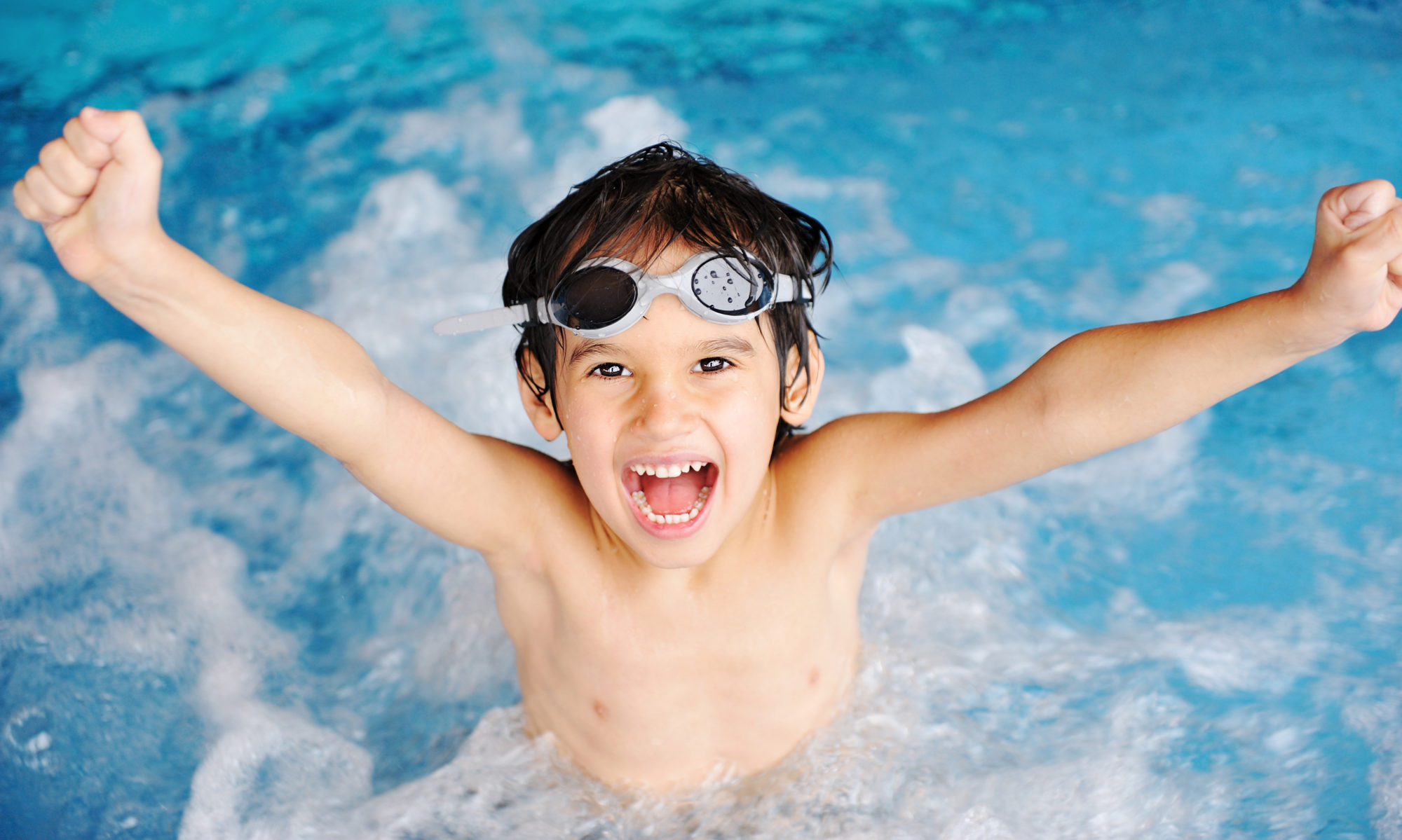When you’re teaching your kids to swim, you might run into trouble with fear of the water. Kids without experience in the water tend to develop a fear of the water as they get older. Most three- and four-year-olds don’t have an entrenched fear of the water. Seven- and eight-year-olds without swimming experience often do. What should you do if your kids are afraid of the water?
How to Deal with Fear of the Water When You Teach Kids to Swim
It’s not unusual for kids to be afraid of the water when they start swimming lessons. You can’t start teaching any swimming skills until the kids are comfortable with the idea of going in the water. These tips will help you up their comfort level and get them past their fear.
Acknowledge that this fear is reasonable.
Being careful around the water is always smart, but before you can swim, that caution comes from a constant awareness of the possibility of drowning. Kids learn about that possibility in a variety of ways. They remember slips in the bathtub. They swallow water the wrong way and cough when they’re learning to drink out of a cup. They see characters in cartoons struggling before going under permanently. They listen to older kids.
Be patient.
If your child is afraid of the water, your best tool is patience. You might already know where his fear originated or how it developed. If you don’t, probe gently for an answer. It’s possible that his fear stems from a misconception that you can quickly correct.
Don’t force it.
If your child becomes upset or doesn’t want to talk about his fear, don’t force him. Instead, start very slowly to work on getting him comfortable with the water before trying to get into the water.
Provide examples.
Point out other kids playing in the water and let your child watch without pressuring him to get in. Point out the ways that water is already a part of his life—from drinking, to taking a bath, to playing in the rain or running through the sprinklers.
Start small.
Have your child sit near the pool. Get your hands wet and gently stroke your child with your wet hands, spreading the water first on his arms and legs and then on his hair and face.
See if he’ll dip his fingers into the water with you next to him. Encourage him to dip just his feet, and then his legs, into the water while you stand in the pool in front of him.
Don’t force your child into the water. If he starts to become upset with something you’re trying, stop and go back to an activity he is comfortable with, even if it’s just taking a sip of water. Be supportive and patient, and work to keep your own expectations under control. If your child is still as afraid as ever after a few weeks of gently easing him into contact with the water, consider taking a break from trying for a while. If he remains very afraid after weeks of trying and a break, consider having him work through the fear with a child psychologist.
If your child is too afraid of the water to take a bath, he’s not ready to learn to swim. Try having him sit in an empty tub and play with toys while you sit with him, either in the tub or just outside the tub. When he becomes comfortable with that, offer him a warm glass of water or a bucket that he can pour into the tub himself when he feels like it. Over the course of several weeks, go through the exercise every day, gradually moving to adding increasing amounts of water from the faucet. Only after your child is completely comfortable in the bath should you consider trying to start to teach him to swim.
